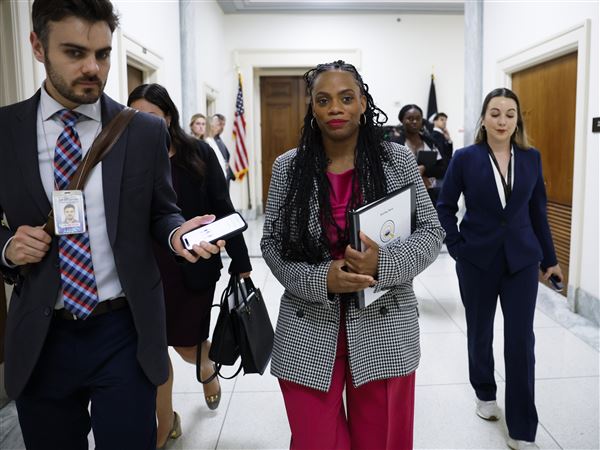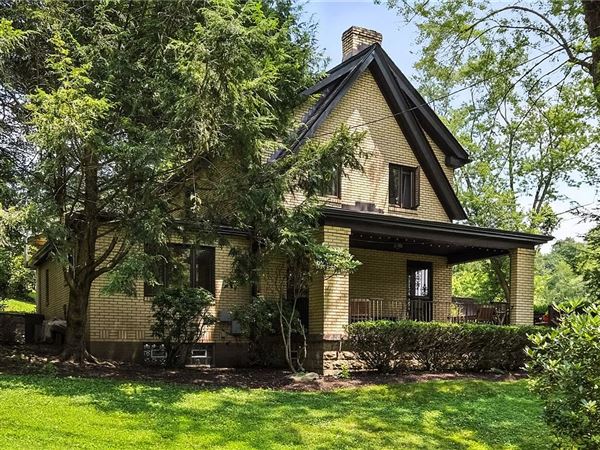WASHINGTON — The divide in American politics is so stark that analysts are beginning to predict something that seldom happens: One party could make big gains in the House while the other adds seats in the Senate.
Not since 1970 has a midterm election provided such a split verdict, and only two other presidential elections, in 1996 and 1972, have demonstrated such division in congressional elections.
Now, particularly after the contentious Senate confirmation of Supreme Court Justice Brett Kavanaugh, Democratic energy is up in the suburban districts that will determine the House majority - just as Republicans claim conservative voters have been jolted awake in rural states that will determine the Senate majority.
Democrats could gain more than the 23 seats needed to take the House majority, which would normally be considered a “wave election” for Democrats up and down the ballot.
But Senate Republicans have gone from clinging to the narrowest of margins, a 51-to-49 majority, to believing they will gain seats, possibly three, the sort of result that would normally mean the national GOP had a very good night.
Charlie Cook, the independent analyst and founder of the Cook Political Report, called the Kavanaugh nomination process “a color enhancement event.” It positioned Democrats to perform even better in the metropolitan areas and Republicans to make gains in the exurban-rural regions.
“It made the reds redder and the blues bluer,” Mr. Cook wrote.
Midterm elections are supposed to be a verdict on the party holding the presidency, and almost always the tide breaks against that party, particularly in House and Senate races, and especially with an unpopular president.
Think of 2006, George W. Bush’s sixth year as president, when Democrats picked up more than 30 House seats and six Senate seats to win the majority in both chambers. Or in 2010, when Republicans picked up 63 House seats and six Senate seats in Barack Obama’s first midterm election.
The tides went the same direction, as the out-of-power voters raced to the polls and the small-but-decisive independents broke against the sitting president in similar fashion across the nation.
President Donald Trump’s first midterm election seemed to be heading that way, as Democrats won special elections in deeply conservative places such as Alabama and had a strong showing in Virginia’s statewide elections last November.
Democrats are now certain to make big gains in the House - Republicans have essentially surrendered about a dozen of their seats already - and the only questions remaining will be if they net the 23 seats needed for the majority and, if so, how big can they grow that margin.
But now, chances are growing for Republican gains in the Senate. The underpinning of such a split verdict can be found in a new report from a study by Third Way, the left-leaning think tank that analyzed voter data in 13 Senate races that will determine the majority.
Twelve of those states favored Mr. Trump in 2016 and nine of those seats are held by Democrats. To win the majority, Democrats need to successfully defend all nine of their seats and take two of the four GOP seats, and the gravity of that hurdle comes through in Third Way’s crunching of data from Catalyst, a liberal group with access to voter files.
From West Virginia to Missouri to Florida and beyond, Republicans start with an edge in terms of the voters most likely to show up at the polls in a midterm.
Across all 13 states, 40 percent of the midterm voters are likely to be “base Republicans,” regular midterm voters who essentially never split their ticket. Democrats could expect 27 percent of their “base” voters to head to the polls, with the rest being potential ticket splitters.
Mr. Trump made plans to spend another Saturday night on the road, this time campaigning for a three-term Republican congressman from Kentucky who is facing a strong challenge in one of the most closely watched U.S. House races.
Rep. Andy Barr wants a fourth term representing Kentucky’s 6th Congressional District but is in a tough contest with Democrat Amy McGrath, a retired Marine fighter pilot.
Democrats have focused on the seat in their drive to regain control of the House.
Mr. Trump tweeted before his trip that Mr. Barr is a “fantastic guy” whose vote the president needs to make America great again. Mr. Trump said Mr. Barr was strong on crime, tax cuts, the military, veterans and the Second Amendment. “Andy has my Strongest Endorsement!!!”
Former Vice President Joe Biden became the highest profile Democrat to campaign for Ms. McGrath when he visited the state Friday night. Mr. Biden told a crowd in Owingsville that “basic American values are under assault” as voters ready for the Nov. 6 elections,
“This is not hyperbole. This election is bigger than politics,” Mr. Biden said.
The Washington Post and Associated Press contributed.
First Published: October 14, 2018, 4:00 a.m.
















